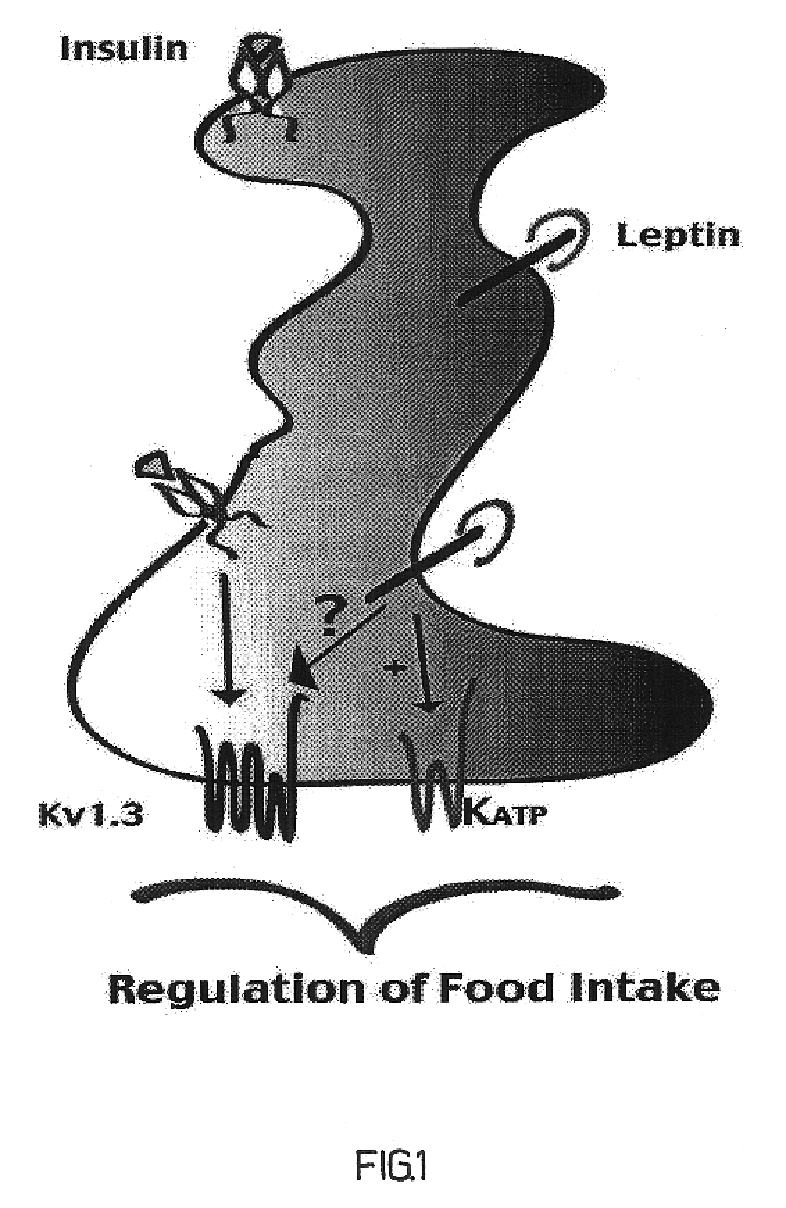Compositions and methods relating to glucose metabolism, weight control, and food intake
a technology of glucose metabolism and weight control, applied in the direction of drug composition, peptide, metabolic disorder, etc., can solve the problems of increasing the threat of obesity, the method has not reversed the trend of increasing obesity, and the lack of discipline, motivation, or time, so as to increase the insulin sensitivity of the animal, increase the insulin sensitivity, and reduce the effect of food intak
- Summary
- Abstract
- Description
- Claims
- Application Information
AI Technical Summary
Benefits of technology
Problems solved by technology
Method used
Image
Examples
experimental examples
[0214]The invention is now described with reference to the following Examples. These Examples are provided for the purpose of illustration only and the invention should in no way be construed as being limited to these Examples, but rather should be construed to encompass any and all variations which become evident as a result of the teaching provided herein.
[0215]The following Examples can be summarized as follows. The present invention is based in part on the surprising discovery that the voltage-gated potassium channel Kv1.3 is a key molecule in the pathway involved in energy homeostasis, regulation of body weight, and insulin sensitivity. The data disclosed herein demonstrate that modulating the activity of Kv1.3, or its associated pathways, increases the resting metabolic rate, decreases mean caloric consumption, and as a result, leads to weight loss. Further, the data demonstrate that regulating / inhibiting Kv1.3 activity leads to both a lowering of blood glucose levels and an i...
PUM
| Property | Measurement | Unit |
|---|---|---|
| Fraction | aaaaa | aaaaa |
| Fraction | aaaaa | aaaaa |
| Weight | aaaaa | aaaaa |
Abstract
Description
Claims
Application Information
 Login to View More
Login to View More - R&D
- Intellectual Property
- Life Sciences
- Materials
- Tech Scout
- Unparalleled Data Quality
- Higher Quality Content
- 60% Fewer Hallucinations
Browse by: Latest US Patents, China's latest patents, Technical Efficacy Thesaurus, Application Domain, Technology Topic, Popular Technical Reports.
© 2025 PatSnap. All rights reserved.Legal|Privacy policy|Modern Slavery Act Transparency Statement|Sitemap|About US| Contact US: help@patsnap.com



